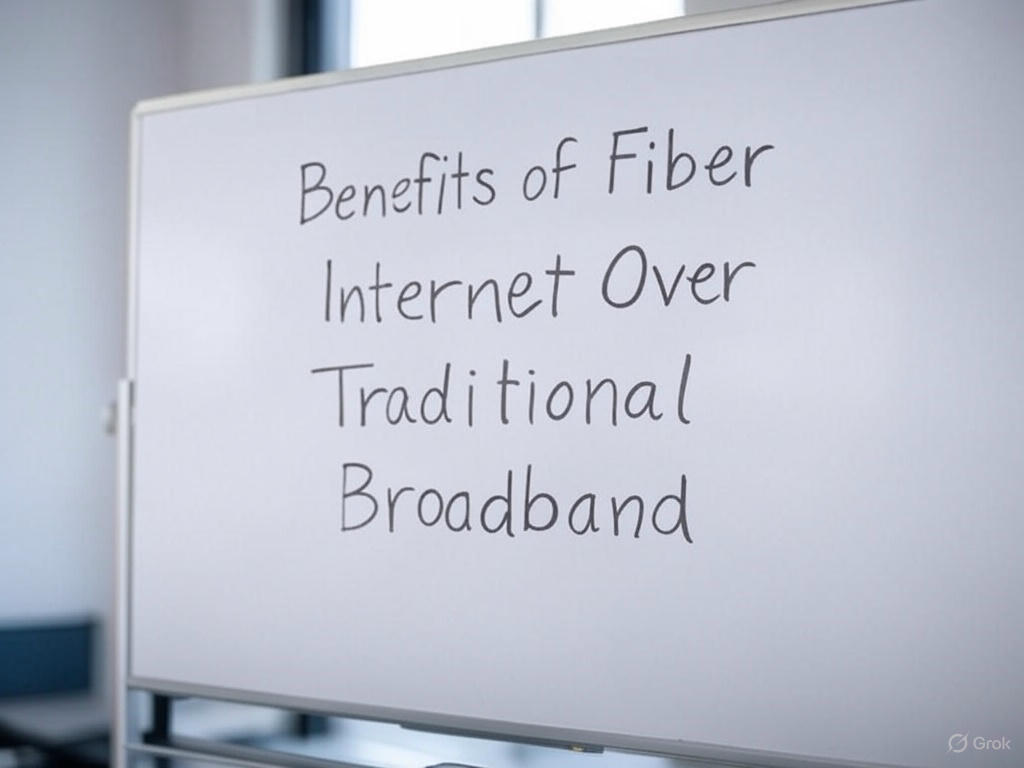Fiber internet is becoming a popular choice for many people and businesses seeking faster and more reliable internet connections, especially through commercial fiber optic installations designed to support high-demand environments. When comparing fiber with traditional broadband, you’ll find several notable benefits. Fiber internet can offer faster speeds and more stable connections, making it ideal for streaming, gaming, and working online.
As you consider upgrading your internet service, exploring various internet plans by Digicel could provide a solution tailored to your needs. The capacity for high-speed data transfer and low latency with fiber means that your online activities are less likely to face interruptions or slowdowns. This technological advancement presents an appealing option for both individuals and businesses looking to improve their internet experience.
Lightning-Fast Speeds
Fiber internet delivers incredibly fast speeds for both downloading and uploading. This makes it suitable for activities that require a lot of data, like streaming high-definition videos or online gaming. You can enjoy smooth and quick access to your favorite content without annoying interruptions.
Unlike other types of internet, fiber internet maintains consistent speed even when many devices are connected at once. This means you can stream a movie while someone else in your home is gaming or attending virtual meetings without any drop in quality. This can be especially useful for households with multiple users.
With fiber, you can take advantage of higher speeds that are less likely to be affected by distance or weather conditions. You get reliable, fast access to the internet without the usual lag or buffering issues common with some traditional broadband connections.
Greater Reliability
Fiber internet offers more consistent and stable connections compared to other types. This means less downtime when you’re online. Electrical interference does not affect fiber, which helps maintain a steady connection even during poor weather conditions.
With fiber internet, you can enjoy high-speed access without the usual disruptions that come with traditional broadband. It delivers consistent performance throughout the day, even during peak usage times. This can be necessary for activities like video calls or online gaming, where a stable connection is important.
Fiber optic technology also reduces latency. This is the delay before data starts transferring. Lower latency means faster response times, which makes online activities smoother and more enjoyable. Whether you’re working, studying, or just browsing, fiber internet provides the reliability you need.
Low Latency
Latency is a key factor in internet connections. Fiber internet offers significantly lower latency compared to traditional broadband. This means data travels much faster from one point to another.
With low latency, activities like video calls and online gaming become smoother and more enjoyable. You experience fewer delays and interruptions, improving your overall online experience.
Fiber’s efficient use of light to transmit data results in minimal delay. This is especially important for tasks that require real-time interaction. Whether you’re streaming content or participating in virtual meetings, low latency guarantees everything runs seamlessly.
Traditional broadband often relies on older technologies that can’t match fiber’s speed in processing and delivering data. Low latency is one of the factors that makes fiber internet a superior choice for many users seeking reliable and efficient online connectivity.
Energy Efficiency
Fiber internet is more energy efficient than traditional broadband. This is mainly because fiber optic cables use light to transmit data, which requires less energy than the electrical signals used by copper wires.
This reduction in energy use helps make fiber networks a greener choice. By using less energy, fiber networks also contribute to lowering carbon emissions, which is better for the environment.
Fiber optic networks can carry large amounts of data over long distances with minimal energy loss. This means you can enjoy faster internet speeds without using as much power, which can lead to cost savings and a smaller environmental impact.
Symmetrical Upload and Download Speeds
Symmetrical internet speeds mean your upload and download speeds are the same. This is important for many online activities you do every day. For example, if you are video calling, streaming, or uploading files, having equal speeds makes a difference.
When upload and download speeds match, tasks like sending large files or participating in video conferences become smoother. This is especially helpful if multiple people in your home are online at the same time.
Symmetrical speeds reduce lag and buffering, leading to a better online experience. With activities like gaming, streaming, and uploading videos, you enjoy a more consistent connection. This makes your internet usage more efficient and enjoyable, no matter what you’re doing online.
Conclusion
Fiber internet offers key advantages over traditional broadband. It provides faster speeds, allowing you to download movies or play online games without lag. The connection is also more reliable, as it is less affected by weather conditions and electrical interference.
Another benefit is the equal upload and download speeds, which are important for activities like video conferencing and cloud storage.
Additionally, fiber is typically more energy-efficient, helping to reduce your power costs over time. It also offers strong security features, making your data transmissions safer. These benefits make fiber internet a strong choice for those seeking improved performance and reliability.






